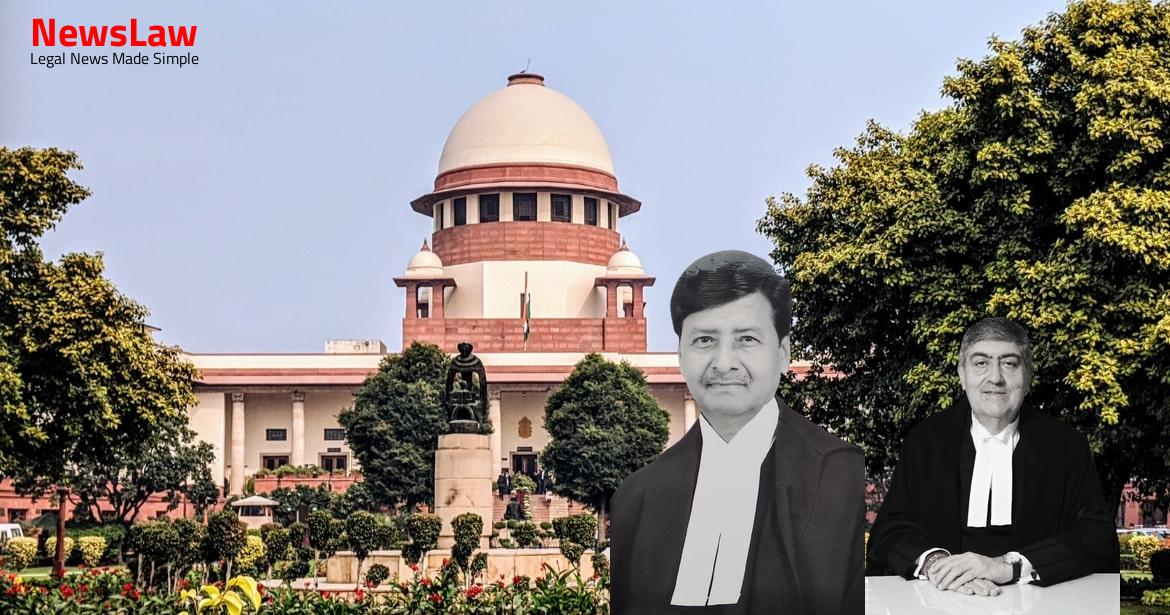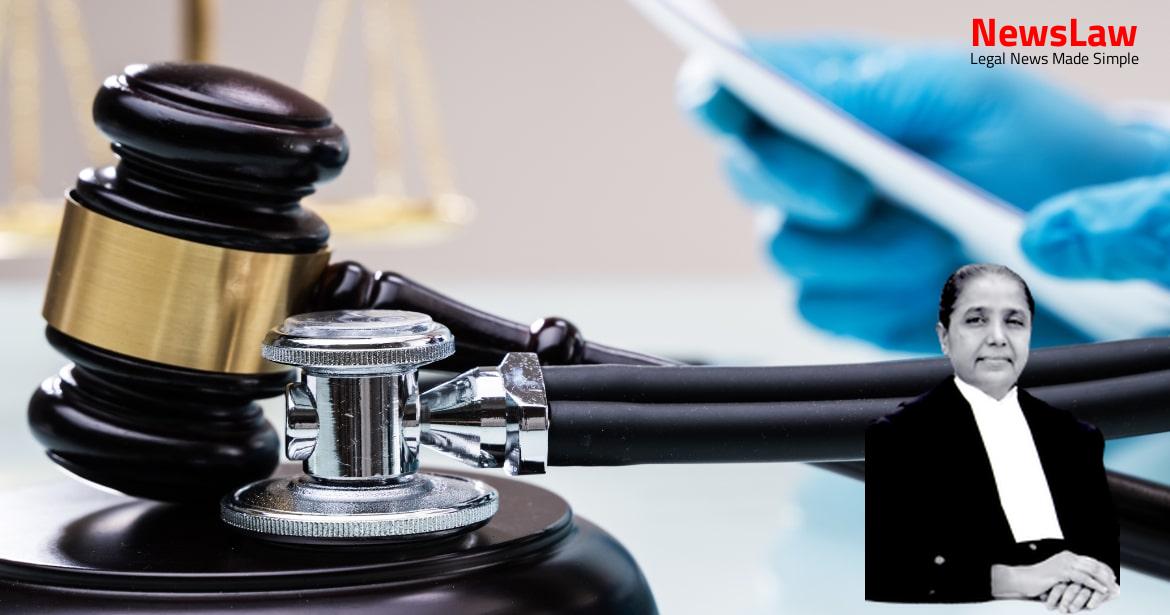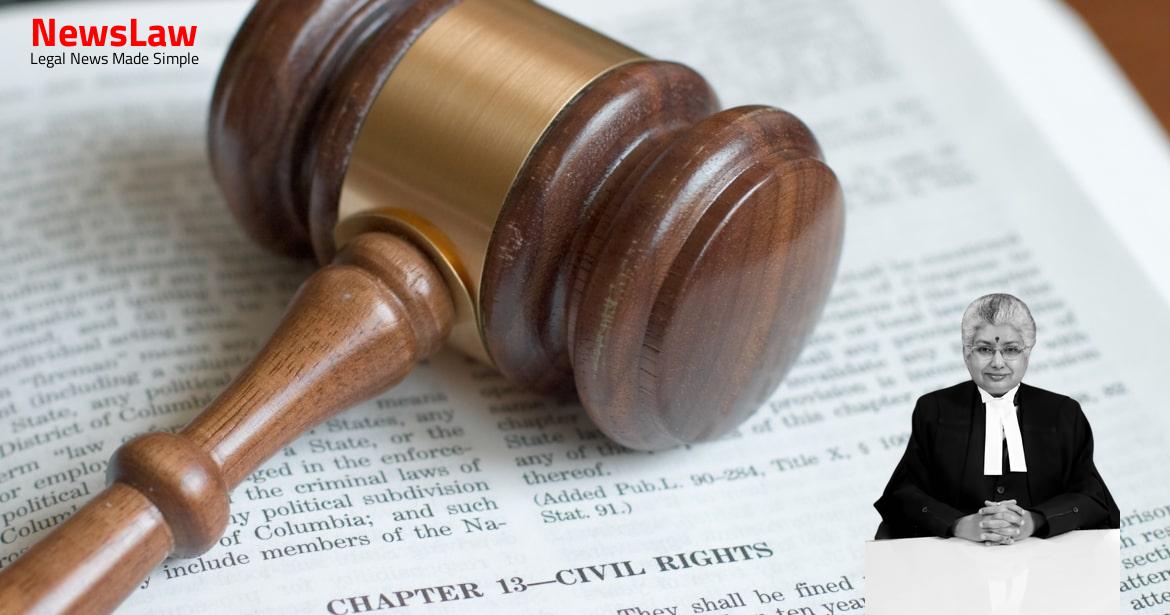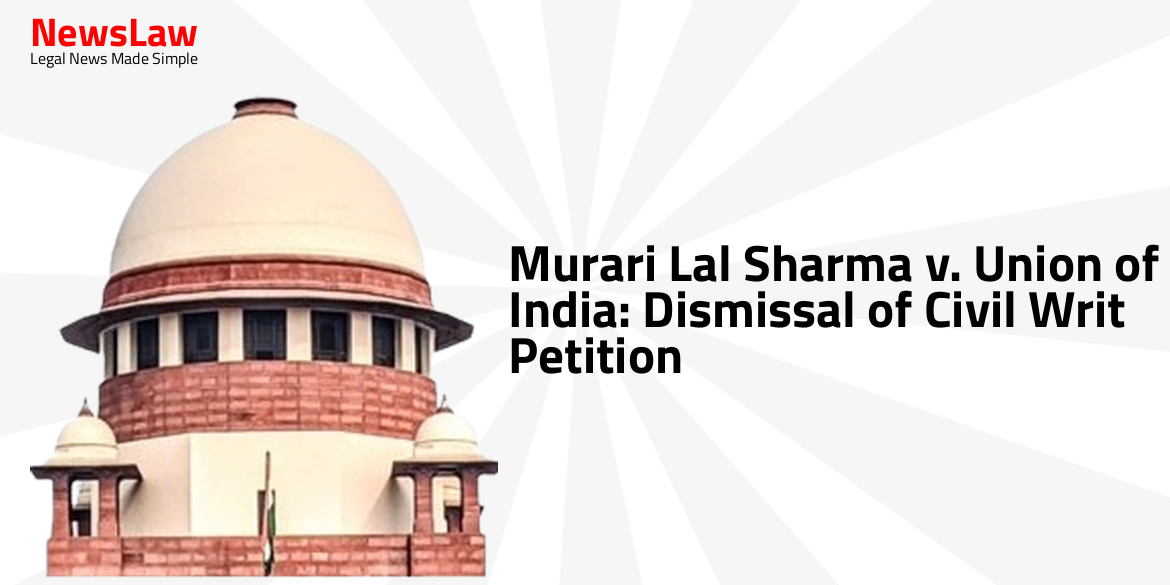The instant appeal delves into the legal intricacies of interpreting the term ‘distinct category’ under the Service Association Recognition Rules. The crux of the matter lies in whether an association formed by a group of employees based on job description qualifies for recognition under the established rules. The Division Bench’s analysis focuses on the literal interpretation of the term and its implications on the formation of employee associations. This summary explores the court’s legal reasoning and its impact on the recognition of service associations within the government sector.
Facts
- The instant appeal challenges the High Court’s order dated 22 September, 2008.
- The High Court considered the association formed by the drivers based on job description as a distinct category under Rule 5 (c) of the Central Civil Services (Recognition of Service Association) Rules, 1993.
- The Division Bench overruled the view of the Single Bench dated 9 October, 2001.
- The respondent filed a writ petition seeking recognition for their association of drivers at ISRO, Nellore District, Andhra Pradesh.
- The High Court rejected the application initially based on the premise that associations based on job description do not qualify for recognition under Rules 1993, which was contested by the respondent.
- The crux of the issue is whether an association formed by a group of employees based on job description is eligible for recognition under Rule 5 (c) of the Rules 1993.
- The appellants were aggrieved by the order and judgment of the Division Bench dated 22 September, 2008.
- The Single Judge of the High Court interpreted the scheme of Rules 1993, R5(c) & R10, along with an Office Memorandum dated 22 April, 1994, and a decision of the Department of Space dated 30 May, 1996.
- The High Court ruled that the scheme aims to protect the common interest of the employees and that associations must represent all groups, not just one specific category like drivers.
- The Department of Personnel and Training and Department of Space clarified that associations based on job descriptions or trades do not qualify for recognition under the Rules 1993.
- The High Court dismissed the writ petition seeking recognition for the association of drivers based on job description not covered by the scheme.
- The respondent challenged the High Court’s decision in a writ appeal.
- The Division Bench reviewed the facts and held that the term ‘distinct category’ under Rule 5(c) cannot be redefined by the DOPT.
- The Division Bench interpreted ‘distinct category’ literally and considered the association of drivers as a distinct category.
- The Division Bench directed the appellants to verify if the respondent meets other pre-conditions of the scheme and proceed with the recognition process under the Rules 1993.
Also Read: Rights Violation in Relegation Order
Arguments
- Mr. Vikramjeet Banerjee, learned Additional Solicitor General argues that the term ‘distinct category’ in Rule 5 (c) of the Rules 1993 was not defined.
- Rule making authority issued a clarificatory memo in 1994 assigning the responsibility to relevant Ministry/Department to decide on ‘distinct category.’
- Learned counsel explains that while rules cannot be changed, administrative circulars can supplement and clarify them.
- The Department of Personnel clarified ‘distinct category’ in its memo to promote harmony among Government employees.
- The Division Bench of the High Court’s literal interpretation of ‘distinct category’ from the Dictionary is challenged as legally unsustainable.
- Associations based on job descriptions like drivers or stenographers do not qualify for recognition under the Rules 1993.
- A letter was issued in 1996 to call for service associations’ applications for recognition under the Rules.
- The term ‘distinct category’ was redefined to include all employees in a region after a meeting with service associations in 1994.
- The respondent fulfills the pre-conditions for recognition as per the Rules 1993.
- The appellants should not rely on the Office Memorandum to deny the respondent’s claim under statutory rules.
- The association of drivers represents a distinct category of government servants with common interests.
- Homogeneity and commonality of interest among drivers justify their recognition as an association exclusively for drivers.
- The Division Bench of the High Court extensively examined and upheld the respondent’s right to recognition.
Also Read: Legal Case: Sentence Reduction in Non-Compoundable Offence
Analysis
- The Rules 1993 aim to promote the common service interests of members of service associations.
- Associations must have a minimum representation of 35% of eligible employees, with a provision for a secondary association if the first has over 35% membership.
- The Department of Space decided that associations exclusively formed by certain job groups like drivers would not qualify for recognition under the Rules 1993.
- The term ‘distinct category’ encompasses a group of government servants with common interest and function as a homogenous group.
- The Latin maxim ‘noscitur a socilis’ supports interpreting words or phrases based on context.
- The intent is to prevent plurality of associations based on job descriptions for efficient representation in JCM.
- The Rules are specific to Central Government employees under the CCS (Conduct) Rules, 1964.
- Clarifications were made by the government regarding the Recognition Rules to avoid confusion and expedite matters.
- The Rules aim to promote harmonious relations and cooperation between the Government and its employees.
- The Department of Space formulated its own JCM scheme in 1977 for employee relations and efficiency in public service.
- These rules apply to Service Associations of all Government servants, excluding industrial employees of the Ministry of Railways and workers employed in Defence Installations of Ministry of Defence
- Service Associations must fulfill certain conditions to be recognized by the Government
- The conditions for recognition include submitting an application with specific information, having the primary objective of promoting common service interests, and maintaining a certain membership
Also Read: Recovery of Misappropriated Temple Funds: Court’s Legal Analysis
Decision
- Pending application(s) disposed of.
- Rule 5(c) of Rules 1993 violated by further sub-classification of posts.
- Recruitment and conduct rules do not permit sub-classification based on job description.
- Distinct category expression cannot be used to form service associations.
- Literal interpretation of distinct category by Division Bench defeats the purpose of Rules 1993.
- Purpose of promoting common service interests undermined by forming multiple associations based on job description.
- Division Bench judgement set aside.
- Appeal allowed.
Case Title: GOVERNMENT OF INDIA Vs. ISRO DRIVERS ASSOCIATION (2020 INSC 484)
Case Number: C.A. No.-007138-007138 / 2010



